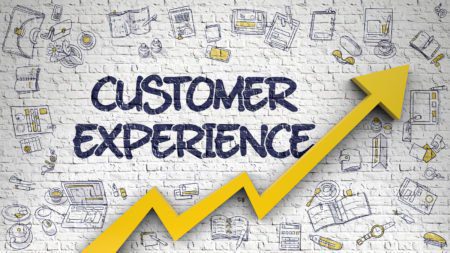In today’s world of increasing options and ever-present information, the customer experience is paramount to a company’s success. According to actual data, 80% of businesses surveyed say they are delivering superior customer service. In reality, only 8% of corresponding customers surveyed felt they actually received a superior customer experience. This is an alarming statistic and should hit home for everyone. Whether you are in education, software, hardware, or any other type of industry, as soon as you have one customer you enter the business of customer service.
Couple this thought with the fact that entities that exceed at the customer experience are also those that are growing the fastest and the importance of the customer experience becomes crystal clear. Customers are smart, and they can access a huge amount of information about you and your product through the computer in their pockets. Scary stuff, right? As a result, many business decisions are customer driven. What is the end product of this combination? As your business and competition in your field grows, the customer experience you develop can become a huge competitive advantage. The real question becomes the how?

Customer experience goes beyond just providing good customer service. The customer experience exists across the entire customer life cycle, not just when the customer makes the purchase, and can have a long-term impact on the customer. This total experience will have a lasting rational, emotional, sensorial, and possibly spiritual impact on the customer. Often, a customer will remember your company in the environment they had the most impactful of these experiences in. Customers are actively engaging with you, or a competitor, throughout the decision to pursue your product or service, their research, their decision to purchase, the acquisition and setup, the entire use, and the disposal or exit from the product or service. These are all the environments where their experience exists. How are you engaging with these customers throughout this life cycle? One way is to ensure that you have contacts that are high in character and focused on the overall experience, no matter their position within the organization. But again, just having good service isn’t the entire picture.
Once the customer has entered into the life cycle with your organization, it is important to think about how the customer relationship is being fostered. This can be considered in terms of service and success, but what is the difference? Customer service is proactive. Saying to the customer, “I have an idea for you…” and using this contact as a way of guiding the customer. Service is company initiated and leads directly to success.
Customer success is the value that you as an organization provide to the customer. It is usually company initiated and expands on the customer’s overall experience with the product or services. Additional customer success can lie in value the customer didn’t even know existed, by providing some sort of additional add they didn’t factor into their original purchase decision.
But, considering just these two facets of the customer relationship leaves out an important 3rd factor, customer support. Customer support lies on the other end of the spectrum from service. It is a reaction to customer needs and says to the customer “we are here for you.” This piece is often initiated by the customer and can be classified as an “I need” from the customer.
Whether you provide a product, service, or some other need to a customer, you are in the customer service business. If you want to ensure that your providing the best overall customer experience possible, you need to think about the entire life cycle of your engagement with the customer. This requires having a clear vision of your customer experience, having complete knowledge of your target customers and the best way to connect with that audience, gauging the success of your customer experience vision based on customer feedback, training and developing every member of your staff on your customer experience vision across the customer engagement life cycle, valuing the feedback from employees on the customer relationship, and measuring the overall impact based on directly relatable business results. Contact TSI today to learn more about how we can help you master your overall customer experience!
